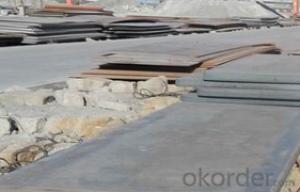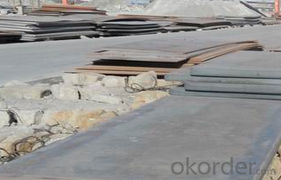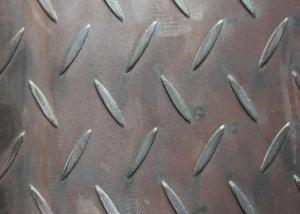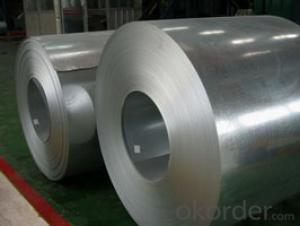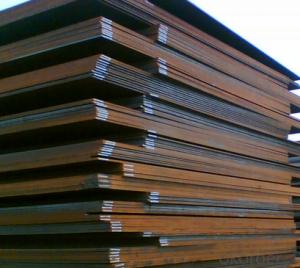Hot Rolled Carbon Steel Sheet A284Gr.D CNBM
- Loading Port:
- Qingdao
- Payment Terms:
- TT OR LC
- Min Order Qty:
- 10 pc
- Supply Capability:
- 30 pc/month
OKorder Service Pledge
Quality Product, Order Online Tracking, Timely Delivery
OKorder Financial Service
Credit Rating, Credit Services, Credit Purchasing
You Might Also Like
Quick Details
| Standard: | AISI, ASTM, DIN, GB, JIS | Grade: | A572,A573,A633,A678,A709,A710,G3101,G3136,etc | Thickness: | 1mm-200mm |
| Brand Name: | SHOU GANG GROUP, AN STEEL | Model Number: | Q235 | ||
| Type: | Steel Plate | Technique: | Hot Rolled | Surface Treatment: | Coated |
| Application: | widely | Special Use: | High-strength Steel Plate | Width: | 1000mm-3000mm |
| Length: | 1000mm-12000mm | Price Term: | FOB CIF CFR |
Packaging & Delivery
| Packaging Details: | standard seaworthy export packing or as the request of customers |
| Delivery Detail: | 10 days after deposit or according to customers' quantity |
Specifications
hot rolled carbon steel sheet
1.Thickness:1mm-200mm
2.Length:1000mm-12000mm
3.Width:1000mm-2000mm
hot rolled carbon steel sheet
| Product | HR steel plate prices carbon steel plate prices per kg |
| MOQ | 25 ton |
| Thickness | 1mm-200mm |
| Width | 1000mm-3000mm |
| Length | 1000mm-12000mm |
| Application | widely |
| Standard | AISI,ASTM,BS,DIN,JIS,GB,etc |
| Grade | A572,A573,A633,A678,A709,A710,G3101,G3136,etc |
| Tpye | Steel plate |
| Surfacing | Coated |
| Productive Technology | Hot Rolled & Cold Rolled |
| Port | |
| Payment Terms | L/C,T/T,Western Union,MoneyGram |
| Product Ability | 5000 tons per month |
| Delivery | 10 days after deposit or according to customers' quantity |
| Packing | standard seaworthy export packing or as the request of customers |
- Q: Can steel sheets be used in corrosive environments?
- Yes, steel sheets can be used in corrosive environments, but the type of steel used and the proper protective measures need to be taken into consideration. Stainless steel, for example, is highly resistant to corrosion and can withstand harsh environments. It contains chromium, which forms a protective oxide layer on the surface, preventing corrosion. Galvanized steel is another option, where a layer of zinc is applied to the steel surface, providing a protective barrier against corrosion. Additionally, various coatings such as epoxy, polyurethane, or paint can be applied to steel sheets to enhance their resistance to corrosive elements. It is important to select the appropriate steel grade and protective coatings based on the specific corrosive environment to ensure long-lasting performance. Regular inspections and maintenance are also necessary to identify and address any potential signs of corrosion.
- Q: Can steel sheets be used in high-temperature environments?
- Yes, steel sheets can be used in high-temperature environments. Steel is known for its high strength and resistance to heat, making it a suitable material for applications that involve elevated temperatures. However, the specific type of steel and its composition should be considered to ensure it can withstand the desired temperature range without excessive deformation or deterioration.
- Q: Can steel sheets be used for decorative column wraps?
- Indeed, decorative column wraps can be created using steel sheets. The versatility of steel sheets allows for easy customization to cater to different design preferences. Whether one desires a sleek and modern look or a more intricate and ornate design, steel sheets can be shaped accordingly. To further enhance the aesthetic appeal and protect against corrosion, steel sheets can be painted or coated with various finishes. Moreover, steel is a durable and long-lasting material, making it suitable for both indoor and outdoor applications. Thus, if one aims to add a contemporary touch or a traditional charm to their space, steel sheets serve as an excellent option for decorative column wraps.
- Q: Are the steel sheets perforated or solid?
- The steel sheets are perforated.
- Q: Are steel sheets suitable for medical equipment manufacturing?
- Yes, steel sheets are suitable for medical equipment manufacturing. Steel is a versatile and durable material that is commonly used in the production of medical equipment. It offers several advantages such as high strength, corrosion resistance, and ease of customization. Steel sheets can be easily formed, welded, and machined to create complex shapes and structures required for medical equipment. Additionally, steel is a hygienic material that can be easily cleaned and sterilized, making it suitable for use in healthcare settings. Overall, steel sheets are a reliable choice for manufacturing medical equipment due to their strength, durability, and ease of fabrication.
- Q: Can steel sheets be used for decorative architectural elements?
- Yes, steel sheets can definitely be used for decorative architectural elements. Steel is a versatile material that can be shaped and manipulated into various forms, making it suitable for creating visually pleasing designs. Steel sheets can be used to create decorative facades, cladding, screens, panels, and other architectural features. The sheets can be cut, welded, perforated, embossed, or textured to achieve the desired decorative effect. Additionally, steel sheets can be coated or finished in different colors or patterns to further enhance their aesthetic appeal. With its durability, strength, and ability to withstand harsh weather conditions, steel is an excellent choice for both functional and decorative architectural elements.
- Q: What is the price of each steel sheet?
- The price of each steel sheet may vary depending on various factors such as size, thickness, quality, and market conditions. It is best to check with steel suppliers or manufacturers to get an accurate and up-to-date price for the specific steel sheet you are interested in purchasing.
- Q: Can steel sheets be used for making kitchen appliances?
- Kitchen appliances can indeed be made using steel sheets. The reason behind steel's popularity for these appliances lies in its durability, strength, and ability to resist corrosion. In the production of kitchen appliances such as refrigerators, ovens, stoves, dishwashers, and range hoods, stainless steel sheets are frequently employed. The smooth surface of these sheets makes cleaning and maintenance hassle-free, rendering them highly suitable for kitchen usage. Moreover, steel sheets can be molded and fashioned into diverse designs, empowering manufacturers to craft appliances that exhibit a sleek and contemporary appearance.
- Q: Can steel sheets be used for decorative architectural elements?
- Yes, steel sheets can be used for decorative architectural elements. They offer a sleek and modern aesthetic, and their durability makes them suitable for both interior and exterior applications. Steel sheets can be customized with various finishes, textures, and patterns to add visual interest to architectural designs.
- Q: How thick are steel sheets available?
- A wide variety of thicknesses can be found for steel sheets, catering to the specific needs of each application. Steel sheets commonly come in thicknesses ranging from 0.5mm (or 0.020 inches) up to several inches. Gauge is typically used to measure the thickness of steel sheets, with lower gauge numbers indicating thicker sheets. Nevertheless, it's worth mentioning that the availability of steel sheets in particular thicknesses might differ depending on the supplier and the type of steel employed.
Send your message to us
Hot Rolled Carbon Steel Sheet A284Gr.D CNBM
- Loading Port:
- Qingdao
- Payment Terms:
- TT OR LC
- Min Order Qty:
- 10 pc
- Supply Capability:
- 30 pc/month
OKorder Service Pledge
Quality Product, Order Online Tracking, Timely Delivery
OKorder Financial Service
Credit Rating, Credit Services, Credit Purchasing
Similar products
Hot products
Hot Searches
Related keywords
